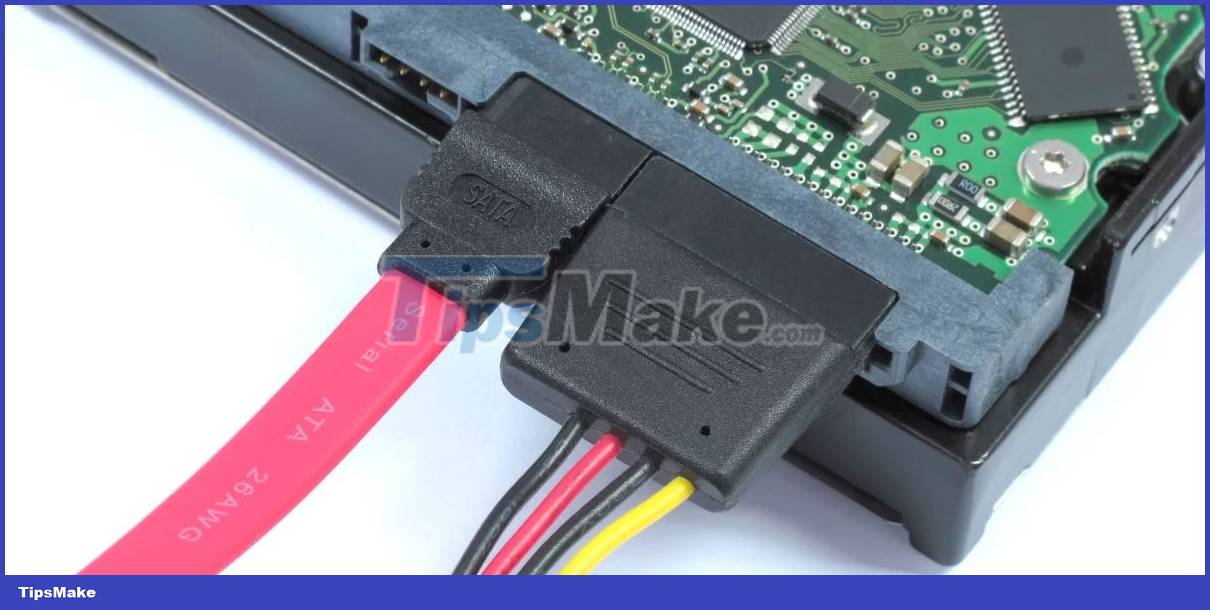Is SAS or SATA the best storage device connection?
Interfaces like SATA and SAS allow motherboards to communicate with HDDs and SSDs, allowing them to load operating systems, run programs, and do almost anything a computer can do.
However, with so many different uses and so many terms, it's easy to get confused with terms like "SATA" and "SAS". What are they? How are they different? And which one should you choose?
What is SATA?
The SATA or Serial Advanced Technology Attachment connector uses 15 standard power pins and 7 data pins. SATA drives are more popular because they prioritize storage capacity over speed, resulting in large amounts of storage that are cheap and easy to use.

However, just because SATA drives focus on storage capacity doesn't mean they're slow. Most consumer SATA drives start at 5400 rpm but can go up to 7200 rpm. Although a SATA drive is not as fast as a SAS drive, it is more than enough for most people to run their computers.
SATA drives are also cheap, making them the perfect storage solution for most situations, such as running a DIY NAS or backing up data regularly. Even when SSDs appeared, SATA hard drives were still popular for large capacity storage.
What is SAS?
SAS stands for Serial Attached Small Computer System Interface. It uses the same connector as SATA, also using 15 pins for power and 7 pins for data transfer. However, the division in the SATA connector between the power pin and the data transfer pin is not as prominent.

SAS drives are faster and more reliable than SATA drives in terms of data transfer. SATA connectors store data fast, but outgoing data is not transferred at the same speed. SAS overcomes this problem by sending data out as quickly as possible.
They are commonly used in enterprise-class applications and servers designed to run 24/7. According to Toshiba, one of the world's most popular hard drive manufacturers, the mean time between failures (MBTF) for SAS drives is between 1.4 and 2.5 million hours of use over a range of temperatures. from 5 to 55 degrees Celsius. In contrast, the MTBF for general-purpose SATA drives only reaches about 600,000 hours of use at the same temperature. Comparison website Diffen puts this difference at 1.2 to 1.6 million hours of use at 45 degrees Celsius for SAS and 700,000 hours to 1.2 million hours at 25 degrees Celsius for SATA drives.
However, they consume more power and it is common to use SAS drives to load the operating system on the server and use SATA drives for storage. This is also done because SAS drives focus more on data transfer speed than storage, meaning SAS drives over 500GB can be quite expensive.
What is the difference between SATA and SAS?
SATA and SAS drives each have their own pros and cons, so here's a useful table to compare the two.
| SATA | SAS | |
|---|---|---|
| Connector type | 15-pin power, 7-pin data (split connector) | 15-pin power, 7-pin data (connector fused) |
| Speed | 5400 to 7200 RPM, data transfer up to 6Gb/s | 7200 to 15000 RPM, up to 12Gb/s data transfer (with dual-port SAS) |
| Reliability | 700,000 to 1.2 million hours at 25°C, may fail during or after extended use | 1.2 million to 1.6 million hours at 45°C, designed for 24/7 use |
| Price | 1TB drives start at ~$25 | Relatively expensive. 1TB drives start at $35 - $40. |
| In case of used | Consumer PCs, laptops and storage solutions | Enterprise environments such as servers and data centers. |
Of course, there are several other types of connections, especially if you're talking about consumer PC use. SATA, compared to NVMe and M.2, is inferior in reliability and speed. Even PCIe SSDs can be a good alternative to SATA.
Should I use SATA or SAS?
As you might guess, both technologies have specific uses. If you want to add mass storage to your local PC or NAS, SATA is generally a better choice. Not only do you get a lot of storage for a relatively low cost, but you also get pretty good data transfer speeds in case you transfer data to an internal hard drive or over the network to a NAS.
However, if you are looking for storage for servers, processing-intensive workstations, data centers, or any other enterprise environment, SAS is the better choice. You'll get faster, more reliable storage that's designed to run continuously without issues. However, the cost will be greater. 1TB SAS drives can be significantly more expensive than 1TB SATA drives due to their popularity. Exact costs may vary by manufacturer, but SAS drives are the more expensive option in most cases.
Overall, the choice depends on your intended use of the drive. If you just want to stick it in your computer to act as mass storage, you're better off going with SATA. However, if you are looking to upgrade the memory on your server or need a drive that works continuously, SAS is the right choice.
 The first Mini PC models running Intel Core Ultra 'Meteor Lake' chip launched: CPU up to 16 cores, Arc GPU, 70W TDP
The first Mini PC models running Intel Core Ultra 'Meteor Lake' chip launched: CPU up to 16 cores, Arc GPU, 70W TDP The 7 best mini PCs for every budget
The 7 best mini PCs for every budget The 5 best RGB cooling fans for PC in 2023
The 5 best RGB cooling fans for PC in 2023 The computer cannot record the screen, how to fix it?
The computer cannot record the screen, how to fix it? Why is the computer's numeric keypad locked? How to fix it?
Why is the computer's numeric keypad locked? How to fix it? The mouse can move but cannot click, let's find a solution
The mouse can move but cannot click, let's find a solution